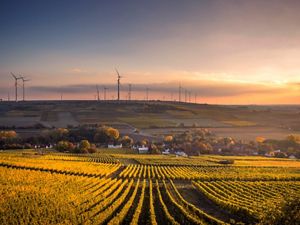Money Makes The World Go ‘Round: Green Banks are a Game Changer
By Lynn Scarlett, Former Chief External Affairs Officer
If you’re a homeowner (and even if you aren’t), you’ve probably tuned into a home improvement show. There’s something irresistible in the way the hosts, who are always so personable and accessible, manage in 30 to 60 minutes to accomplish a life-changing transformation that would take the average homeowner months to finish. It’s all the satisfaction with none of the headache of finding a contractor, sorting through bids, and dealing with delays, changes and unexpected challenges. Under the hand of the television experts, what is usually undertaken with no small amount of apprehension, looks almost doable.
When the improvement you’re looking at is to make your home or business more energy efficient, or even maybe do a solar installation, it would be nice if Chip and Joanna Gaines could take you through the process of finding and installing a solution the same way they shepherd their clients through buying and renovating a home on “Fixer Upper.” But that’s not how it works. In many parts of the country, those who want to take advantage of clean energy and energy efficiency technology have to collect and sort through a complicated array of programs and providers to figure out what they can do, how much it will cost, and what incentive programs may exist to help defray that cost or increase the savings. Many consumers and businesses want to take advantage of the long-term savings the clean energy technology revolution is bringing to the table. They just don’t have the time or the wherewithal to undertake the process, even when there is capital available to them to finance the up-front costs.

Enter the Energy Investment Partnership (EIP), also called a “green bank,” which is changing the game with respect to access to financing. A green bank is a mechanism that allows both public and private sector entities to deploy capital specifically for clean energy and energy efficiency projects. As lenders dedicated to funding clean energy projects, consumers and businesses have greater access to the capital needed to install solar panels, replace outdated equipment, and upgrade the efficiency of buildings and equipment, all of which lead to long-term savings for energy users that ultimately pay back the initial capital investment.
In many instances around the country, states need this jumpstart of capital to get a clean energy boom off the ground. Pennsylvania is a good example. The “Pennsylvania Energy Investment Partnership Report” that our Pennsylvania program released in July 2017, prepared in partnership with the Coalition for Green Capital, estimates that the state has the potential to add between $7 – $9 billion in economically viable distributed energy projects, including clean energy generation, energy efficiency, microgrids and storage. These projects could add more than 72,000 jobs to the state’s economy. However, the marketplace for financing these projects is disjointed, complicated and consequently underutilized.

An EIP or green bank does more than just loan money. It serves as a hub for lenders, investors, public agencies, vendors, business owners and consumers, and its goal is not just to collect income from lending products and investments, but also to improve market conditions. A green bank both invests its own money and sources investment capital from the marketplace. Green banks can also take on information gaps, transaction costs and other inefficiencies in the market that inhibit growth. If Pennsylvania were to create a green bank, the state would receive an influx of investment capital for clean energy, and the bank could provide valuable information services and other tools to make it easier for businesses and consumers to realize long-term savings and benefits.
How do we know this plan will work? Our partner, the Coalition for Green Capital, has also been working with the Connecticut Green Bank in that state. Since its creation in 2011, the bank has invested nearly a billion dollars in roughly 20,000 clean energy projects, using public money to attract private investment. With a ratio now of nearly 10 dollars of private money invested for every dollar of public funds, the bank has served as a catalyst to clean energy growth in the state. It also creates jobs. The bank’s projects have led to the creation of over 13,000 new jobs in Connecticut. In July 2017, the Connecticut Green Bank was awarded an Innovation in American Government Award from Harvard University. Other states like New York, New Jersey, Rhode Island and Maryland are exploring the concept, which has taken many forms—state-wide and regional, independently run or state-sponsored. We hope Pennsylvania joins them.
Bryan Garcia, CEO of the Connecticut Green Bank, talks a lot not just about how the bank provides a kick start to clean energy projects, but also the fact that the bank makes these projects more affordable for businesses and consumers. “Inclusive prosperity,” he calls it. We’re used to the latest technology and conveniences often only being available to the wealthy, but green banking makes it easier for people at modest income levels to afford clean energy. Indeed, part of what makes green banking so exciting is its ability to provide all the tools to accelerate access to clean energy and energy efficiency savings for everyone. With green banking, the clean energy revolution, much like that “Fixer Upper,” starts to look much more doable.
Originally Posted on National Geographic
September 08, 2017
View Original


